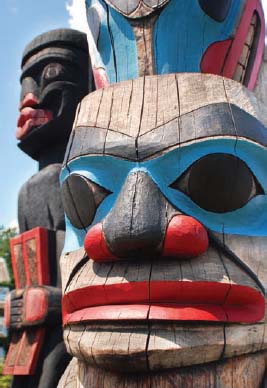The Modern World During and After the World Wars, C. 1914–1960Native American Art |
What were Haida totem poles? |
The Haida people lived along the Pacific coast in an area that stretched from California to Alaska. The Haida had rich traditions of weaving, carving, and sculpting and their totem poles, which served as important representations of social status, are examples of monumental sculptures usually carved from cedar trees. A significant art form for at least three hundred years, totem poles depict images of animals or other natural object that serve as a spiritual emblem. Haida totems depict details of family lineage and social status, and were valuable enough to occasionally lead to warfare as clans disputed rightful ownership of totemic images. Haida totem poles could be placed either inside or outside, and could be as much as sixty feet tall. Outside, totem poles could be freestanding and painted, and were used to guide canoes to shore. Totem poles were also used as structural support inside houses, while shorter poles were used for burials.

Haida totems depict details of family lineage and social status, and were valuable enough to occasionally lead to warfare as clans disputed rightful ownership of totemic images.
